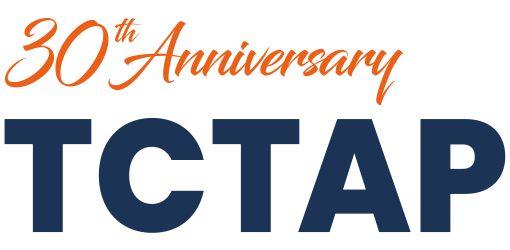
True Love Stories Never Have Endings
The phrase "True love stories never have endings." is drawn from Richard Bach's reflections on love, where he emphasizes the eternal nature of true love. It encapsulates his belief that genuine love transcends time and space, leaving a lasting impact that continues to grow and evolve, even beyond the boundaries of a traditional "ending." I thought of the stories of our alumni as never-ending love stories as well.
Everything may seem the same, yet it is the differences that define our lives. Looking back at our history, the Division of Cardiology at the Asan Medical Center has achieved global recognition in just 36 years since its establishment in 1989. The most notable distinction lies in the unique founding philosophy established by Chairman Chung Ju-Yung, which embodies "Helping the poor, the sick, and those struggling in our society." He championed a new model of servant leadership, emphasizing the importance of team collaboration over personal gain and fostering a sense of shared ownership among all members. He left behind a simple yet profound question: "Have you tried it?"—a call to embrace the spirit of challenge and pursue new endeavors.
An almost impossible feat has been accomplished. At just the right time, the division of cardiology brought together good people—like-minded individuals. Back then, we were all "No. 3s," hungry young dreamers. With a clear and visible goal of surpassing the established university hospitals, we worked tirelessly, driven by excitement and enthusiasm. It became a ritual for the four of us—Seung-Jung Park, Seong-Wook Park, Jae-Joong Kim, and Jae-Kwan Song—to work late into the night until 10:30, then gather afterward to share a drink, as if to toast the day's relentless efforts.
Over the past 36 years, through the invaluable connections with all of you, our alumni, we have learned from and supported one another. Together, we have risen to become the very best in the world—excelling not only on the scale of our care but also in the depth and quality of our academic achievements. I believed the timing was perfect, and fortune truly favored us. We achieved global recognition, earning first place during the evaluations at the Transcatheter Cardiovascular Therapeutics (TCT) conference in 2024. I firmly believe that our ability to turn the seemingly impossible into reality lies in the value of 'collaboration' that defines our team.
The survival of Homo sapiens on Earth was made possible by 'collaboration.' Collaboration has been the most effective survival strategy for humans, from our hunter-gatherer ancestors to the present day. In fact, the purpose of working together is that the team's overall yield and benefit become much greater than what an individual could achieve alone. From a socio-economic perspective, the greater the benefits, the higher the chances of survival. That's why humanity has survived as a group. However, one of the most important conditions for coming together is that 'good people who can help each other' must gather.
We have risen to the top, with no rivals but ourselves. Yet, as an organization expands, so too does its complexity, its diversity, and the challenges to the very spirit of collaboration that brought us here. We must never forget that collaboration is not stable, it is a fragile, living thing that requires constant care and vigilance. When individual desires and ambitions align with the collective good, they become the spark that ignites progress. But when they devolve into division and factionalism, they sow the seeds of ruin. History reminds us of this truth—after all, even the mighty Rome fell. The rise and fall of great entities are woven into the fabric of human history. To safeguard the founding philosophy that makes us unique, and to nurture the culture of collaboration that defines our team, we must each make a conscious and continuous effort. For, in the end, the story of Homo sapiens is a story of survival through collaboration—a truth as timeless as it is essential. I earnestly hope that our unique spirit of collaboration, the essence of our team's values, embodied through relentless questioning, studying, learning, supporting, and respecting one another—will be faithfully passed down to the next generation.
While organizing the photos, among the many alumni who trained in cardiology at AMC, I have curated photos that highlight moments captured during the TCTAP meetings over the past 30 years. The photos primarily feature people who were photographed during the TCTAP meeting. Unfortunately, many others were inevitably left out. I appreciate your understanding. While my recollections may not be perfect, I have included a few personal impressions alongside the images. As I reviewed each of our alumni one by one, I was deeply reminded of the immense effort and dedication you all poured into your training years. Though it was a period of learning and growth, it was also a time defined by your hard work and perseverance, for which I bow my head in gratitude. I firmly believe that without your unwavering commitment and tireless contributions, the Department of Cardiology at Asan Medical Center would not be where it is today. Reflecting on how each of you has transitioned from your training to take on vital roles in your respective fields fills me with both pride and gratitude. Seeing you dedicate yourselves wholeheartedly to your responsibilities reaffirms that the values and culture of our team have been preserved and continue to thrive.
Looking ahead, I feel a deep sense of joy and hope, as though I am already witnessing the bright and promising future of our team for the next 30 years. Thank you all for being an integral part of this journey.
Everything may seem the same, yet it is the differences that define our lives. Looking back at our history, the Division of Cardiology at the Asan Medical Center has achieved global recognition in just 36 years since its establishment in 1989. The most notable distinction lies in the unique founding philosophy established by Chairman Chung Ju-Yung, which embodies "Helping the poor, the sick, and those struggling in our society." He championed a new model of servant leadership, emphasizing the importance of team collaboration over personal gain and fostering a sense of shared ownership among all members. He left behind a simple yet profound question: "Have you tried it?"—a call to embrace the spirit of challenge and pursue new endeavors.
An almost impossible feat has been accomplished. At just the right time, the division of cardiology brought together good people—like-minded individuals. Back then, we were all "No. 3s," hungry young dreamers. With a clear and visible goal of surpassing the established university hospitals, we worked tirelessly, driven by excitement and enthusiasm. It became a ritual for the four of us—Seung-Jung Park, Seong-Wook Park, Jae-Joong Kim, and Jae-Kwan Song—to work late into the night until 10:30, then gather afterward to share a drink, as if to toast the day's relentless efforts.
Over the past 36 years, through the invaluable connections with all of you, our alumni, we have learned from and supported one another. Together, we have risen to become the very best in the world—excelling not only on the scale of our care but also in the depth and quality of our academic achievements. I believed the timing was perfect, and fortune truly favored us. We achieved global recognition, earning first place during the evaluations at the Transcatheter Cardiovascular Therapeutics (TCT) conference in 2024. I firmly believe that our ability to turn the seemingly impossible into reality lies in the value of 'collaboration' that defines our team.
The survival of Homo sapiens on Earth was made possible by 'collaboration.' Collaboration has been the most effective survival strategy for humans, from our hunter-gatherer ancestors to the present day. In fact, the purpose of working together is that the team's overall yield and benefit become much greater than what an individual could achieve alone. From a socio-economic perspective, the greater the benefits, the higher the chances of survival. That's why humanity has survived as a group. However, one of the most important conditions for coming together is that 'good people who can help each other' must gather.
We have risen to the top, with no rivals but ourselves. Yet, as an organization expands, so too does its complexity, its diversity, and the challenges to the very spirit of collaboration that brought us here. We must never forget that collaboration is not stable, it is a fragile, living thing that requires constant care and vigilance. When individual desires and ambitions align with the collective good, they become the spark that ignites progress. But when they devolve into division and factionalism, they sow the seeds of ruin. History reminds us of this truth—after all, even the mighty Rome fell. The rise and fall of great entities are woven into the fabric of human history. To safeguard the founding philosophy that makes us unique, and to nurture the culture of collaboration that defines our team, we must each make a conscious and continuous effort. For, in the end, the story of Homo sapiens is a story of survival through collaboration—a truth as timeless as it is essential. I earnestly hope that our unique spirit of collaboration, the essence of our team's values, embodied through relentless questioning, studying, learning, supporting, and respecting one another—will be faithfully passed down to the next generation.
While organizing the photos, among the many alumni who trained in cardiology at AMC, I have curated photos that highlight moments captured during the TCTAP meetings over the past 30 years. The photos primarily feature people who were photographed during the TCTAP meeting. Unfortunately, many others were inevitably left out. I appreciate your understanding. While my recollections may not be perfect, I have included a few personal impressions alongside the images. As I reviewed each of our alumni one by one, I was deeply reminded of the immense effort and dedication you all poured into your training years. Though it was a period of learning and growth, it was also a time defined by your hard work and perseverance, for which I bow my head in gratitude. I firmly believe that without your unwavering commitment and tireless contributions, the Department of Cardiology at Asan Medical Center would not be where it is today. Reflecting on how each of you has transitioned from your training to take on vital roles in your respective fields fills me with both pride and gratitude. Seeing you dedicate yourselves wholeheartedly to your responsibilities reaffirms that the values and culture of our team have been preserved and continue to thrive.
Looking ahead, I feel a deep sense of joy and hope, as though I am already witnessing the bright and promising future of our team for the next 30 years. Thank you all for being an integral part of this journey.
Seung-Jung Park, MD
Chair Professor of Internal Medicine, University of Ulsan, Asan Medical Center
Chairman, CardioVascular Research Foundation (CVRF)
Director, TCTAP
Editor-in-Chief, Photo Album





























